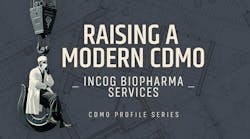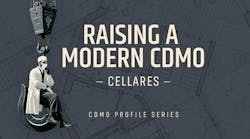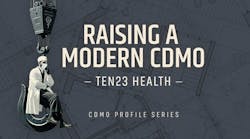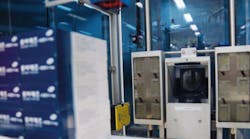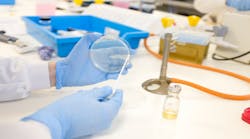There have been a number of tragic episodes in recent months, related to products being imported from countries noted for outsourcing. The major reason for outsourcing is financial. There is extreme pressure on pharmaceutical manufacturers to lower costs or, at least, slow the increases of retail prices. The quickest way to slow cost increases is to perform a number of manufacturing functions in countries where overhead is lower.
If we wish to have a material or product manufactured for substantially less than here in the US of A, then the cost must be low enough to make up for shipping times and costs while still showing a profit. The basic equipment and chemicals manufactured in a lower cost-of-living country make up some of the difference, but the major cost in any project is labor. In order to have an extremely low labor expense, one must work with a developing country, such as China.
The ambient culture in such cases is that of lower education, sanitary conditions, and experience with “US/European-type” working conditions. Such conditions were common in the US and Europe in the late nineteenth and early twentieth century’s. They predated labor unions, the five-day work week, safety issues (OSHA), decent wages, health benefits, job training, overtime pay, vacations, and the like. In addition to the conditions of the workers, the products were not always safe.
Science had not advanced, nor was there legal pressure to perform product safety (of efficacy) testing. US and European candy manufacturers, for instance, commonly used metal salts to impart colors to candy for children (even their own).
It was only the use of ethylene glycol as a medium for a sulfa drug (causing many deaths) that caused Congress to act. Since there was no precedent on “goodness of product,” the first Pure Food and Drug Act of 19062 (the Wiley Act) was enacted, addressed product safety: “That is shall be unlawful for Columbia any article of food or drug which is adulterated or misbranded, within the meaning of this Act; and any person who shall violate any of the provisions of this section shall be guilty of a misdemeanor, and for each offense shall, upon conviction thereof, be fined not to exceed five hundred dollars or shall be sentenced to one year's imprisonment, or both such fine and imprisonment, in the discretion of the court, and for each subsequent offense and conviction thereof shall be fined not less than one thousand dollars or sentenced to one year's imprisonment, or both such fine and imprisonment, in the discretion of the court.”
“In case of drugs: First. If, when a drug is sold under or by a name recognized in the United States Pharmacopoeia or National Formulary, it differs from the standard of strength, quality, or purity, as determined by the test laid down in the United States Pharmacopoeia or National Formulary official at the time of investigation: Provided, That no drug defined in the United States Pharmacopoeia or National Formulary shall be deemed to be adulterated under this provision if the standard of strength, quality, or purity be plainly stated upon the bottle, box, or other container thereof although the standard may differ from that determined by the test laid down in the United States Pharmacopoeia or National Formulary. Second. If its strength or purity falls below the professed standard or quality under which it is sold.”
The Drug Efficacy Study Implementation (DESI) was a program begun by the Food and Drug Administration (FDA) in the 1960s after the requirement that all drugs be efficacious as well as safe. The DESI program was intended to classify all pre-1962 drugs that were already on the market as either effective, ineffective, or needing further study. The DESI program was a consequence of the Kefauver-Harris Drug Control Act. The U.S. Kefauver-Harris Amendment or Drug Efficacy Amendment of 1962 was a response to the Thalidomide tragedy, in which thousands of children were born with birth defects as a result of their mothers taking thalidomide for morning sickness during pregnancy.
In fact, “food supplements” may still make claims without actually “making claims” on things like diet plans. As far as safety of products, US and European manufacturers learned slowly and needed legislative prodding to reform. It was only a few years ago that FD&C Red #2 was banned as a colorant, followed quickly by a number of commonly used chemical colorants. Chloroform was used as a solvent and sweetener in pediatric cough medicines and children’s fluoroscopes were common in shoe stores to allow children’s shoes to be fitted “properly.”[3]
Matters were even more complicated with toxic chemicals and (now) controlled substances. Calomel, a mercury salt, was dispensed for headaches and other ailments through the 1950s and Paregoric, an opium-based drug, was sold for the use on children’s gums during teething. Clearly, the country’s safety record didn’t become perfect with the passage of a bill in 1906! The Delaney Amendment was a provision in the later US Food, Drug, and Cosmetic Act (1958). It stated that “no food additive shall be deemed safe after it is found to induce cancer when ingested by human beings or animals, at any dose level. [Bold and italics are Author’s.]
Such an additive therefore must not be used.” It seemed that every week a number of “generally regarded as safe” or GRAS substances were found via methods such as the Ames test5-8 to be carcinogenic or mutagenic. The “novelty” wore off once the industry made such testing routine and fewer and fewer substances were allowed to be made for consumption. Later, the “any level” part was moderated by reality. It was determined that virtually any chemical could induce tumors if the dose was high enough. If it was determined that the level was much lower than “trigger” levels and exposure material was for limited duration (not chronic dosing), exceptions, on a risk/value determination were made.
It was a continuous, albeit slow, process from 1906 to today. Pharma manufacturers no longer simply accept active pharmaceutical ingredients (API) or excipients without testing or, after vendor validation, a certificate of analysis. However, there is a loophole in this approach that a (dishonest) person could drive a truck through: most of the tests assume honesty. A large number of USP, ASTM, EP, BP and other compendial tests are inferential. For example, lactose, USP has a series of wet tests: e.g., when boiled with copper oxide, lactose forms a red solution, showing that it is a reducing sugar. In addition to an infrared spectrum (which resembles almost any sugar), there are optical rotatory tests, loss on drying, heavy metals, etc. The sum total of these should add up to chemically safe lactose.
All these tests assume no deliberate adulteration or criminal intent. However, as with paper currency, eventually, someone can find a way to counterfeit virtually any bill. In the case of a drug substance, e.g. heparin, many tests are performance based. This is fine as long as the supplier is honest and/or following cGMP (current Good Manufacturing Principles). Since the industry in Europe and North America has progressed so far, we overlook or forget that the recently named “Third World” has not made similar progress.
In light of the mistakes and abuses that caused the 1906 Act to be made law (102 years ago!) and subsequent additions, it is not surprising that a country, such as China, struggling to enter the 20th century (let alone the 21st) is having “growing pains. It is trying to accomplish in 20 years what we (barely) managed in 125. As the recent earthquake(s) showed, building codes are not equivalent to those in the US and Europe. Certainly information technology lags, and, quite obviously, manufacturing codes for food and drug products are archaic, at best. In light of this, pharmaceutical outsourcing is using the cheap labor resources whilst ignoring the concomitant potential hazards.
While avoiding expensive labor in the “West,” globalized companies outsource to the labor pools of developing countries, merely hoping to reduce costs. As has been seen with heparin, safeguards only work when all parties are playing on a level field. For example, when a Pharma company outsources from its plant in New York to a supplier in Alabama, there is seldom a problem. The state governments of both NY and Al are beholden to the FDA and Federal and state laws. As a consequence, in lieu of actual vendor validation, a company may choose to perform some USP tests on incoming materials as a quick confirmation of ID.
This is fine as far as it goes; most tests test for the material, not a deliberate contaminant! Many compendial tests date back many decades and were intended to 1) assure the neighborhood druggist that he did, indeed, purchase aspirin and 2) it is of the correct potency. These older tests were not designed to test for sophisticated forgeries or clever counterfeits, or simple adulteration. The government of China (with a massive land area and over 1,000,000,000 people to watch) cannot provide the same level of production enforcement as the state of Alabama. The costs involved with getting a country such as China up to our overall standards is staggering. Needed are thousands of FDA inspectors, many thousands of civilian scientists and QA personnel to monitor/train the personnel at the outsource locations. The cost will be many billions of dollars to bring them to the level of adherence as current cGMP-compliant suppliers.
Upon reaching scientific/manufacturing par with the “Western world,” there is a good possibility that the trained workers (of a developing country) will demand higher pay, shorter hours, vacation time, health benefits, and all the rest that goes with modernization. At that point, someone like China will become “too expensive” for the global pharmaceutical companies and will be abandoned for less expensive locations. Then multinational manufacturers will look to Africa or South America for lower cost alternatives.
It might be suggested that making the current manufacturing processes leaner and more efficient would be a better plan than exporting the current, inefficient processes around the world. Thus, the source of the title: is the risk of outsourcing to developing countries really worth the short-term benefit? Will having inexperienced labor work with older methodology make the products better as well as less expensive?
As manufacturing proprietary methods are sent to outsourcing companies in countries known for counterfeiting, will that accelerate the occurrence of counterfeits that look more like actual products?
References
- ICH Harmonised Tripartite Guideline, “QUALITY RISK MANAGEMENT Q9”, Current Step 4 version , dated 9 November 2005
- Pure Food and Drug Act of 1906, United States Statutes at Large (59th Cong., Sess. I, Chap. 3915, p. 768-772)
- Buster Brown shoes, Elizabeth, New Jersey, c. 1955; personal experience of the author.
- US Food, Drug, and Cosmetic Act, 1958
- Bruce N. Ames, E. G. Gurney, James A. Miller, and H. Bartsch (1973). "Carcinogens as Frameshift Mutagens: Metabolites and Derivatives of 2-acetylaminofluorene and other Aromatic Amine Carcinogens". PNAS 69: 3128-2132.
- Bruce N. Ames, Frank D. Lee, and William E. Durston (1973). "An Improved Bacterial Test System for the Detection and Classification of Mutagens and Carcinogens". PNAS 70: 782-6.
- Joyce McCann, Neil E. Spingarn, Joan Kobori, and Bruce N. Ames (1975). "Detection of Carcinogens as Mutagens: Bacterial Tester Strains with R Factor Plasmids". PNAS 72: 979-83.
- Bruce N. Ames, William E. Durston, Edith Yamasaki, and Frank D. Lee (1973). "Carcinogens are Mutagens: A Simple Test System Combining Liver Homogenates for Activation and Bacteria for Detection". PNAS 70: 2281-5.
